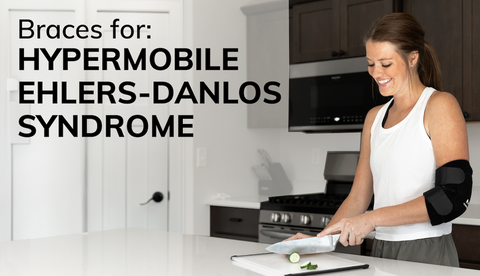Patellar Tracking Disorder | Patellofemoral Tracking Syndrome
What is patellar tracking disorder?
Patellar tracking disorder, often referred to as patellofemoral tracking syndrome, happens when the kneecap (patella) moves out of its place while the leg bends or straightens. For most people, the kneecap shifts too far towards the outside of the leg. However, for some, the kneecap will shift towards the inside of the leg. The shift in the kneecap causes patella misalignment.
What is the anatomy of your knee joint?
To visualize the anatomy of your knee, separate it into three different parts. First, the thighbone (femur) meets the shin bone (tibia) to form the main portion of the joint. Secondly, On the outside of the joint there is an outer or lateral portion, and on the inside, there is an inner or medial portion of the joint. Lastly, there is the kneecap, a small bone that acts as a guard for your knee joint. The kneecap exists where the thighbone and shin meet and is held in place by tendons and ligaments. Along with protecting your knee joint, the patella connects muscles in the front of your thigh to your shin. Patellar tracking disorder occurs in the third portion of the joint as seen below.
![]()
What causes patellar tracking disorder and kneecap misalignment?
Patellar tracking disorder is usually not caused by one specific thing. Rather, it is most often an accumulation of multiple issues.
Potential causes include:
-
Activities that put stress on the knee repeatedly, specifically anything involving a twisting motion.
-
Weak thigh muscles
-
Any tendon, muscle, or ligament in the leg that may be too tight or too loose.
-
The shape of the patella
-
Damage to the cartilage
-
Overuse or overtraining with any given physical activity
Along with these potential causes, your chances of an unaligned patella increase if you are overweight, run, or play sports that would require repeated intense motions (jumping, squatting, etc).
What are symptoms of patellar tracking disorder?
There are a multitude of symptoms that could indicate patellar tracking disorder. Pain experienced at the front of the knee during physical activity is a strong indicator. Activities, like squatting and jumping, are triggers of this type of pain. A popping, grinding, or slipping sensation in the knee area are often used to describe the sensation experienced. Other symptoms include buckling of the knee and increased mass of one’s thigh muscle.
How do you treat patellar tracking disorder?
To treat patellar tracking disorder a person should start by taking a break from the physical activity that is causing the problem. Trying ice and heat treatment before and after activity have proven results and will minimize swelling. As your pain starts to decrease, increasing stretching and exercises will help with flexibility and strength in the area. Wearing a brace and taping the knee are recommended treatments for patellar tracking disorder, along with shoe inserts.
What brace do you wear for patellar tracking disorder?
Because kneecap misalignment can occur in a variety of directions, there are a variety of potential braces for your particular issue. Some braces will offer support and realignment for a shift of the kneecap to the outside of the leg (which is the most common), while others offer support for a shift to the inside of the leg. In general, patellar braces are used to support and stabilize the knee. View a variety of patella support braces.
Is patellar tracking disorder dislocation of the knee?
Not quite.. or at least not yet! Once you have a patellar tracking problem you become more susceptible to a wide variety of conditions, including patellar subluxations and patellar dislocations of the knee. Patellar subluxation syndrome is a tracking disorder in which instability with the kneecap occurs. In essence, a patellar subluxation is a partial dislocation. Patellar dislocation is the scientific name for a dislocated kneecap. When the kneecap is dislocated it shifts out of its spot in the patellofemoral groove.
Are there surgery options for patellar tracking disorder?
There are numerous surgical options for patellar issues. However, prior to contemplating surgical options, we recommend rest, stretches, exercises, taping, and wearing a brace. Physical therapy and consulting with a doctor about your condition are also important components in recovery. There are some surgical options for patellar issues that vary depending on the specific condition that you have. For example, lateral release surgery is one of the most common procedures. In lateral release surgery, the kneecap is realigned and placed back for normal tracking. The surgery is minimally invasive, with two to three small incisions in the knee area.
What is patellofemoral pain syndrome?
Often associated with patellar tracking disorder is a condition called patellofemoral pain syndrome. Patellofemoral pain syndrome is pain that exists at the front of the knee, also referred to as runner’s knee. This injury is most common in people who play sports as it is most often an overuse injury. An array of issues may contribute to the development of the syndrome, including knee misalignment. Patellofemoral pain syndrome creates stiffness making everyday physical activities, like walking upstairs, difficult and painful.










